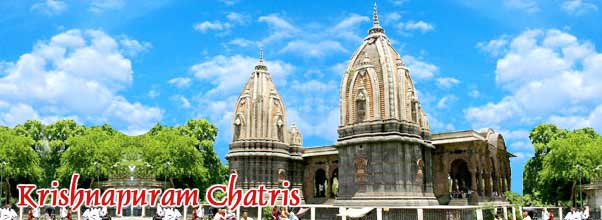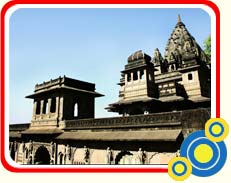  |
|
|
Indore History The
history of Indore reveals that the ancestors of the founders of the city
were the hereditary Zamindars and indigenous landholders of Malwa. The
families of these landlords led a luxurious life. They retained their
possessions of royalty, including an elephant, Nishan, Danka and Gadi
even after the advent of Holkars. They even retained the right of
performing the first pooja of Dussehra (Shami Pujan). During Mughal
rule, the families were granted confirmatory sanads by the Emperors
Aurangzeb, Alamgir and Farukhshayar, confirming their 'Jagir' rights. The
history of Indore reveals that the ancestors of the founders of the city
were the hereditary Zamindars and indigenous landholders of Malwa. The
families of these landlords led a luxurious life. They retained their
possessions of royalty, including an elephant, Nishan, Danka and Gadi
even after the advent of Holkars. They even retained the right of
performing the first pooja of Dussehra (Shami Pujan). During Mughal
rule, the families were granted confirmatory sanads by the Emperors
Aurangzeb, Alamgir and Farukhshayar, confirming their 'Jagir' rights. Rao Nandlal Chaudhary Zamindar was the Chief Zamindar and received a special place in the emperor's court of Delhi. He was presented two jewel studded swords, which are now displayed in the Royal British Museum. He was also friendly with Raja Savai Jai Singh of Jaipur. He gifted him with a special "Gold Langar" which guaranteed a special place to him in all the Durbars of India. In 1713, Deccan plateau was handed over to Nizam. This renewed the struggle between the Marathas and the Mughals. Read on to know more about the historical background of Indore. From time to time, Maratha invaders kept harassing the people of Malwa Rao Nandlal Chaudhary. Being the chief Zamindar, he had an army of 2000 soldiers. Once, while visiting the banks of river Saraswati, Rao Nandlal found a location surrounded by rivers on all sides. To protect his people from harassment by Marathas and Mughals, he started moving his people to this place and constructed the fort of Shree Sansthan Bada Rawala. This city was named Indrapur after Lord Indreshwar, and eventually came to be known as Indore. In 1743 AD, Baji Rao Peshwa finally received the Viceroyalty of Malwa. However he was bound by a treaty from infringing upon the rights of Zamindars. Malhar Rao Holkar was one of the four signatories of the treaty. So, on victory, the Peshwas appointed Malhar Rao Holkar as a "Subhedar". This marked the beginning of Holkars' reign in Malwa. Indore also came under the rule of Maratha Maharajas of the Holkar dynasty. In 1733, the dynasty's founder, Malhar Rao Holkar (1694-1766), was appointed as the Maratha Governor of the region. By the end of his reign, the Holkar state was independent. He was succeeded by his daughter-in-law Ahilyabai Holkar (1767 - 1795). She ruled from a palace-fort at Maheshwar, situated to the south of Indore. Ahilyabai Holkar had a passion for architecture. She used to donate money for the construction of Hindu temples, across the Indian subcontinent. In 1818, the Holkars were defeated by the British in the Third Anglo-Maratha War and the Holkar kingdom became a part of the British Empire. After the defeat in the Battle of Mahidpur, the treaty of Mandsaur was signed. According to which, the Cantonment town of Mhow was handed over to the British. The treaty also declared the shifting of the capital of the Holkar state from Maheshwar to Indore. In 1947, after India's independence, Indore, along with other princely states, became a part of the Indian state of Madhya Bharat. Indore was elected as the summer capital of the new state. Finally, on November 1, 1956, Madhya Bharat was merged into Madhya Pradesh. |
|||||||
Copyright © : Indore City |